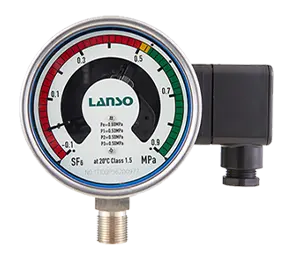With the continuous development of technology, various SF6 density monitoring systems have emerged, among which the SF6 density monitoring system is increasingly common in the power industry. This article will introduce the application background, working principle, specific implementation methods, and related precautions of the SF6 density monitoring system.
SF6 Density Monitoring System Application Background
SF6 is a gas insulation material widely used in the power industry for its insulation performance and arc extinguishing ability, serving as the insulation medium for high-voltage switchgear, circuit breakers, transformers, and other equipment. However, SF6 can decompose to produce toxic and harmful gases under high temperature and arcing conditions, affecting human health and equipment operation. In addition, leaks of SF6 gas can reduce equipment insulation performance, leading to equipment damage or accidents. Therefore, real-time online monitoring of SF6 gas is of great significance.
Currently, SF6 density monitoring systems are widely used in various aspects of the power industry such as substations, power lines, switchgear, etc., to achieve real-time monitoring of SF6 gas concentration, promptly detect leaks, and take corresponding measures to ensure the safe and stable operation of power equipment.
SF6 Density Monitoring System Working Principle
The SF6 density monitoring system mainly consists of sensors, data collectors, and signal processing units.
Sensor Working Principle
SF6 sensors mainly utilize the electrochemical principle to detect toxic and harmful gases (such as SO2, H2S, etc.) generated by the decomposition of SF6 gas and convert them into electrical signals output.
Data Acquisition Principle
The data collector receives electrical signals from the sensor, converts the signals into digital signals through built-in ADC (analog-to-digital converter), and processes, stores, and analyzes the data.
Signal Processing Principle
The signal processing unit further analyzes the collected data, implements leakage warning, concentration display, and other functions based on pre-set alarm thresholds. It also uploads the data to the monitoring center for remote monitoring and management by personnel.
SF6 Density Monitoring System Specific Implementation Methods
The implementation of SF6 density monitoring systems should follow the following steps and methods:
1. Equipment Selection
Choose suitable SF6 online monitoring equipment according to the monitoring site. For key facilities like substations, power lines, etc., stable and high-precision monitoring equipment should be selected; for smaller spaces like switchgear, compact and integrated monitoring equipment can be used.
2. Installation Method
Determine the appropriate installation position and method based on the specific model and specifications of the equipment. Normally, sensors should be installed at the top of the equipment or in a position conducive to gas collection, while ensuring good grounding of the equipment casing to avoid electromagnetic interference and lightning impacts.
3. Wiring Requirements
Strictly follow the requirements in the equipment manual for wiring, ensuring that power lines, signal lines, etc., are connected correctly, securely, and labeled appropriately.
4. Data Processing
Set appropriate alarm thresholds based on actual needs. When the SF6 gas concentration exceeds the threshold, the system should immediately issue an alert and upload the data to the monitoring center for personnel to take corresponding measures. The system should also have data storage and analysis functions for querying historical data and trend analysis.
5. Network Connection
To enable remote monitoring and management, the SF6 density monitoring system should be connected to the network and linked to the power company's monitoring center via the internet. Personnel can view equipment operation status and gas concentration data at any time using a browser or mobile terminal.
With the continuous development of the power industry, the application of SF6 density monitoring systems will become more widespread. To ensure the stable operation of the system and the safety of power equipment, power companies should pay attention to the construction and maintenance of SF6 density monitoring systems and improve their application level in production and management.







